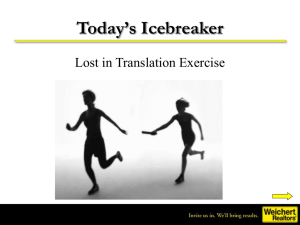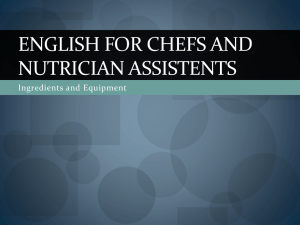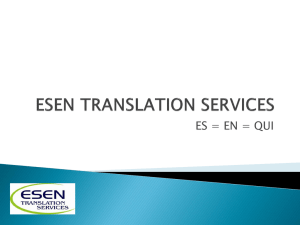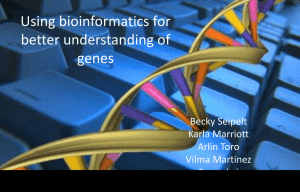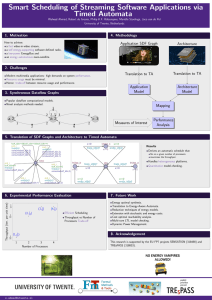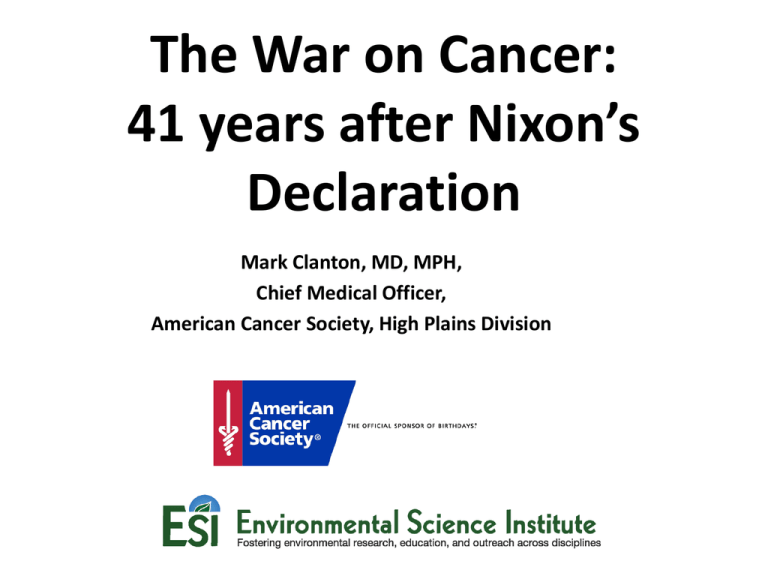
The War on Cancer:
41 years after Nixon’s
Declaration
Mark Clanton, MD, MPH,
Chief Medical Officer,
American Cancer Society, High Plains Division
Fighting Cancer:Time to Translation
Discovery
Translation
FDA
Translation
to Practice
Time Line: Greater than 17 to 20 years
Wide
Acceptance
Fighting Cancer: Time to Translation
Discovery
Translation
FDA
Translation
to Practice
Time Line: Greater than 17 to 20 years
Wide
Acceptance
US Cancer Death Rate
Death
People
100,000 People
per 100,000
Rate per
Death Rate
250
200
150
100
50
0
Year
Source: 1900-1970, U.S. Public Health Service; 1971-2001, U.S. National Center for Health Statistics
Risk Factors/Causes of Cancer in the US
Smoking
Obesity/Poor Nutrition/Inactivity
Unknown
Occupational Exposure
Viruses
Family History/Genetics
Alcohol
UV and Ionizing Radiation
Prescription Drugs
0
10
20
30
Percent Attributable to Cause
40
Cigarette Smoking by Adults 18 and Older in U.S.
Percentage of Population
50
Male
40
Female
30
20
10
0
1970
1980
1990
2000
Source: National Health Interview Survey, 1965 – 2010
2002
2003
2004
2007
2010
Where and How will Science
Battle Cancer in the Future?
Where will the War on Cancer be
Waged in the Future?
• Understanding Personal and Population Risk
for Cancer
• Precision Screening and Diagnosis
• Changing Science Policy
Gene-Environment Interaction:
Public Health and Personal Risk
or
Where DNA Meets the World
…though, even in the US, most
women do not develop the disease?
Comprehensive answers will be found
when we understand what happens
when DNA meets the world
DNA
• Single gene mutation
• Multiple gene mutations
• Gene-environment interactions
Individual
• Single gene cancer
• Multiple gene mutations and cancer
• Gene-environment changes resulting in loss of tumor suppressor
Population
• Public health and gene-environment interactions studies
• Nurses health study
• Cancer prevention studies
• Diet
• Exercise
Environment • Environmental exposure
DNA
Environment
- Single gene
mutations
- Environmental
Exposures
- Nucleotide
polymorphisms
- Diet
- Gene-gene
interactions
- Gene-environment
interactions
- Exercise
Is Obesity a Genetic or
Environmental Cause of Cancer?
Obesity in the United States
1970 and 2008
Percent of Population
40
35
35
30
25
20
20
15
15
10
5
1970
2008
0
American Adults, Age 21 and above
4
1970
2008
American Children, Aged 6 to 11
The Impact of Gene-environment Interactions
Community
Government
and Public
Health
Infrastructure
Academia
Assuring
Conditions
for
Population
Health
The Media
Health
Care
Delivery
System
Employers
and
Business
RECENTLY
ENROLLING:
CPS-3
• UT Medical School
could play a role here
• Need more than
300,000 enrollees
• Enrollments occurring
in Missouri,
Oklahoma, and Texas
• Long term
commitment
• Diverse population
Can we find Cancer Cells before they
become a Cancer Diagnosis?
• Circulating Tumor Cells
Circulating Tumor Cells: Shed from
tumors, and in the bloodstream
•Progress in Prostate Cancer?
•What is Our Detection Limit Capability?
The Liquid Biopsy
Screening for Cancer in Blood
Drawing Blood
Finding Cancer in Blood
National Cancer Institute, http://www.cancer.gov/cancertopics/understandingcancer/nanodevices/AllPages
Prostate Cancer and CTC
•
•
•
•
Draw blood
Find the cancer
Test for whether it is deadly (genetic profile)
Inform prognosis
Probability of Survival (%)
Number of Circulating Cancer Cells Can Predict Survival and
Guide Treatment in Hormone Resistant Prostate Cancer
Months Since Sampling Blood
(After Miller et al., 2010)
Precision Screening Cancer:
Colorectal Screening
The Present as an Example
Colon Cancer Screening Today
• Card based test such as
Hemoccult and SDNA
• Sigmoidoscopy
• Virtual Colonoscopy
• Double Contrast Barium
Enema
• Colonoscopy
Colon Cancer Screening Tomorrow
How Early can Cancer be Diagnosed?:
Nanoscale Devices
http://nano.cancer.gov/learn/understanding/
Can nanostructures help us see cancer ?
Quantum dots:
• Tiny quantum dots are
made from semiconductor
crystals as small as one
nanometer (one-billionth
of a meter).
• They can zero in with
pinpoint accuracy on
human prostate cancer.
In ultraviolet light, each
dot radiates a brilliant
color.
Advances in Colorectal
Screening and Diagnosis:
Gold Nanoparticles
• Identification and removal
of non-invasive high grade
neoplasia
• Flat/ulcerative colorectal
neoplasms more
dangerous
• Flat lesion more difficult to
find
• Gold nanoparticles may
offer more precise
diagnosis of GI cancers.
Scanning electronmicrograph of gold nanoparticles created by the
National Cancer Institute and the National Institute of Standards
and Technology. Credit: NIST (2008)
Can Research be changed to
speed its impact on Humans?
Time to Translation
Discovery
Translation
FDA
Translation
to Practice
Time Line: Greater than 17 to 20 years
Wide
Acceptance
Time to Translation
Discovery
ACCELERATE
Translation
Time Line: Less than 10 years
Translation
to Practice
“The highest and best purpose
of biomedical science is realized
when the knowledge derived
from research is used to
improve the human condition.”
Mark Clanton, MD, MPH - NIH
QUESTIONS?
Health Policy and Medical Practice
Issues
Understanding more about them mechanisms of disease will
undoubtedly lead to new treatments
The more scientists identify and fine-tune the genetic factors behind
disease or drug response, the more doctors will want to screen
individuals for gene variants in order to tailor medical care
Such personalized medicine may well lead to higher health care costs
and thus may create a policy quandary
Policy Quandaries
If not communicated well, the findings from gene-environment research
could even backfire.
If you found a set of genes that made people highly resistant to the effect
of smoking on lung cancer - and again, that’s a hypothetical - it’s unlikely
that those same genes would make people resistant to the other bad
effects of smoking like heart disease.


